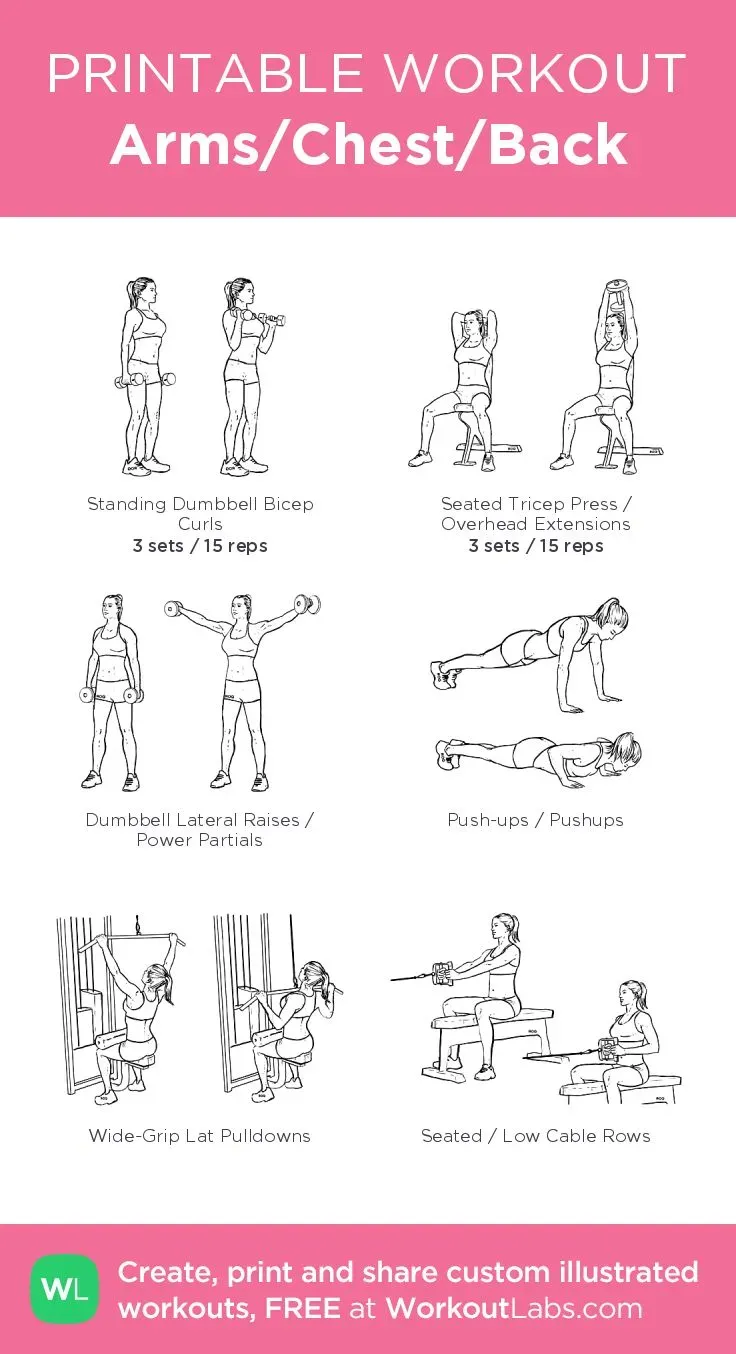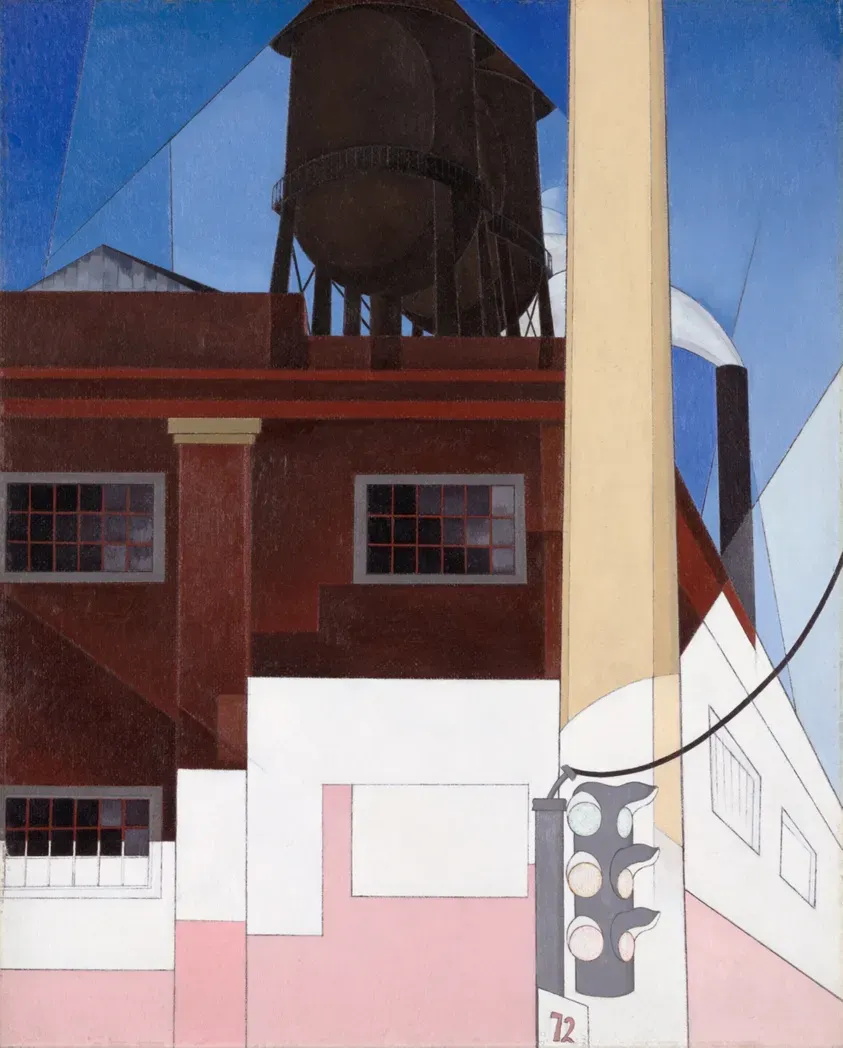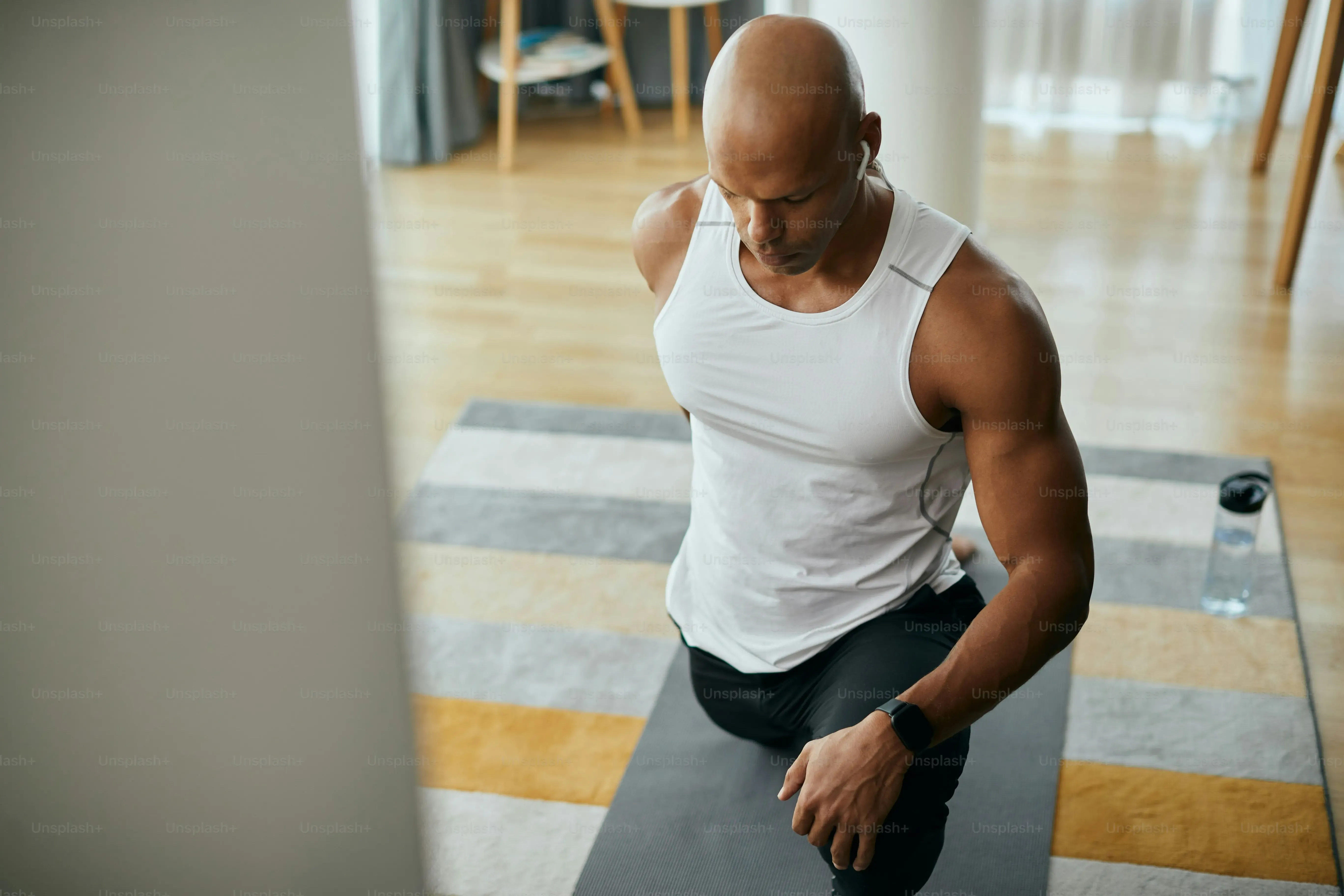Table of Contents
Let's be honest, dragging yourself to a crowded gym isn't always in the cards. Maybe time is tight, maybe you just can't stand waiting for the bench press, or maybe the idea of sweat-soaked equipment gives you the creeps. Whatever the reason, skipping your upper body day shouldn't be the default. You can absolutely build serious strength and definition right where you are, without fancy machines or judgmental stares. This article cuts through the fluff to give you a solid plan for an effective arms chest and back workout at home.
Why an Arms Chest and Back Workout at Home Matters

Why an Arms Chest and Back Workout at Home Matters
Skip the Commute, Own Your Schedule
Let's face it, getting to the gym can feel like a second job. The time spent packing a bag, driving through traffic, finding parking, and navigating crowded locker rooms adds up fast. This friction is often the silent killer of workout consistency. An arms chest and back workout at home eliminates all those hurdles. You roll out of bed, throw on some shorts, and you're already at your training ground. This incredible convenience makes it exponentially easier to stick to a routine, even when life gets chaotic.
Think about those days when you have a sudden meeting or a kid's soccer game. If your gym is across town, that workout is probably toast. When your setup is just a few feet away, you can squeeze in 20-30 minutes whenever a window opens. This flexibility isn't just nice; it's a game-changer for long-term progress. Consistency, not heroic but infrequent efforts, builds muscle and strength.
Your Body is Your Gym
Gym memberships and fancy equipment cost money, often a significant chunk. People drop hundreds, sometimes thousands, on gear that ends up collecting dust. A powerful arms chest and back workout at home doesn't require a personal loan or a dedicated weight room. Your own body provides all the resistance you need to start building a solid foundation. Push-ups work the chest, shoulders, and triceps effectively.
Rows using a sturdy table or dips off a chair hammer the back and triceps. Pull-ups, if you have a bar (a relatively cheap investment), are king for back width and biceps. You can make serious gains using nothing but gravity and your own weight. This accessibility removes the financial barrier that stops many people before they even begin.
- Saves Time: No travel needed.
- Saves Money: Minimal to no equipment cost.
- Increases Consistency: Easier to fit into busy days.
- Builds Functional Strength: Exercises mimic real-world movements.
- Offers Privacy: Work out without feeling self-conscious.
Build Real-World Strength, Consistently
Bodyweight exercises, the backbone of an effective arms chest and back workout at home, build what trainers call "functional strength." This is the kind of strength that translates directly to everyday activities – lifting groceries, carrying furniture, pushing a stubborn door. These movements often engage multiple muscle groups simultaneously, improving coordination and stability alongside raw power.
Focusing on consistent, compound movements at home trains your body to work as a unit. You're not just isolating a single muscle; you're teaching your muscles to fire together efficiently. This integrated strength is incredibly valuable. And because it's so easy to stay consistent with a home routine, you'll see progress stacking up week after week, which is far more motivating than sporadic gym visits that leave you feeling like you're starting over every time.
Essential Exercises for Your Arms, Chest, and Back Workout at Home

Essential Exercises for Your Arms, Chest, and Back Workout at Home
so you're sold on the idea of ditching the gym commute and building strength from your living room. Great choice. Now, let's get down to the nuts and bolts: the actual movements that make up a killer arms chest and back workout at home. Forget those infomercials promising six-pack abs with a gadget you strap to your stomach; real strength comes from fundamental, compound exercises that challenge your muscles through a full range of motion. We're talking about pushing, pulling, and dipping – the bedrock of upper body power, all achievable with little more than your bodyweight and maybe a sturdy piece of furniture or a doorway pull-up bar. These aren't just random moves; they are time-tested staples that will carve out definition and build functional strength effectively and efficiently.
Structuring Your Arms Chest and Back Workout at Home

Structuring Your Arms Chest and Back Workout at Home
Finding Your Rhythm: How Often and When
you've got the exercises down. Now, how do you actually piece them together into a routine that makes sense for your arms chest and back workout at home? It's not just about doing a bunch of push-ups whenever you feel like it. Consistency and structure are key. For most beginners, hitting these muscle groups 2-3 times per week is a solid starting point. This gives your muscles enough stimulus to grow but also allows for crucial recovery time. Trying to blast your chest every single day is a fast track to burnout and injury, not gains. Think of it like building a wall – you need to lay bricks, but you also need the mortar to dry.
The exact days you choose depend entirely on your schedule. Maybe Monday, Wednesday, and Friday work best. Or perhaps you prefer Tuesday, Thursday, and Saturday. The specific days matter less than the fact that you *have* specific days planned. Block out the time in your calendar. Treat it like an important appointment you can't miss. Whether you're a morning person who likes to get it done before the world wakes up or an evening warrior who de-stresses with dips and rows, find what fits and stick to it. This planned approach is central to effectively structuring your arms chest and back workout at home.
- Aim for 2-3 sessions per week focusing on upper body.
- Allow at least one rest day between sessions.
- Schedule your workouts like important appointments.
- Consistency is more important than daily grinding.
- Listen to your body – rest when you need to.
Warming Up, Cooling Down, and Exercise Order
Before you dive into those push-ups or pull-ups, don't skip the warm-up. Seriously, this isn't just something trainers say to sound smart. A good warm-up prepares your muscles and joints for the work ahead, significantly reducing your risk of pulling something or feeling stiff later. Five to ten minutes of light cardio (jogging in place, jumping jacks) followed by some dynamic stretches (arm circles, torso twists) is usually enough. Get the blood flowing and your body ready to move through a full range of motion safely during your arms chest and back workout at home.
When it comes to the order of exercises, a common and effective strategy is to start with the most challenging compound movements that hit the largest muscle groups. For an arms chest and back workout at home, this often means prioritizing push-ups (for chest/triceps/shoulders) and rows or pull-ups (for back/biceps). Doing these big lifts when you're freshest allows you to put maximum effort into them, leading to better strength gains. Finish your session with more isolated movements if you feel you need them, like triceps dips or bicep curls using resistance bands or household items. And just like the warm-up, don't skip the cool-down. A few minutes of static stretching (holding stretches for 20-30 seconds) helps improve flexibility and can aid recovery.
Making the Most of Your Arms Chest and Back Workout at Home

Making the Most of Your Arms Chest and Back Workout at Home
Progressive Overload: The Home Edition
you've got your routine set for your arms chest and back workout at home. You're doing push-ups, rows, maybe even some dips. That's a solid start, but eventually, your body will adapt. If you keep doing the same number of reps and sets with the same intensity, you'll hit a plateau faster than a bad comedian. To keep making progress, you need to challenge your muscles in new ways. This is called progressive overload, and it's non-negotiable for building strength and size, whether you're in a fancy gym or your garage. It's not about just doing more; it's about doing it smarter.
How do you apply progressive overload to your arms chest and back workout at home with minimal equipment? You can increase the number of reps or sets you do for an exercise. If you can comfortably do 15 push-ups, aim for 17 next time, then 20. You can also slow down the tempo of your reps, focusing on the eccentric (lowering) phase of the movement – that controlled descent during a push-up feels brutal but builds serious strength. Another method is to decrease your rest time between sets. Cutting down from 90 seconds to 60 seconds makes a set of push-ups much harder. You can also introduce variations: if regular push-ups are easy, try decline push-ups with your feet elevated, or move to one-arm variations as you get stronger. For rows, if a table feels too light, find something sturdier or try single-arm rows. Get creative with household items for added resistance if needed, like a backpack filled with books for weighted push-ups or pull-ups.
Overload Method | How to Apply At Home | Example |
|---|---|---|
Increase Reps/Sets | Do more repetitions or add an extra set. | Go from 3 sets of 10 push-ups to 3 sets of 12. |
Increase Time Under Tension | Slow down the movement, especially the lowering phase. | Take 3-4 seconds to lower your chest during a push-up. |
Decrease Rest Time | Shorten the break between sets. | Reduce rest between sets from 90 seconds to 60 seconds. |
Exercise Variation | Switch to a harder version of the exercise. | Move from knee push-ups to regular push-ups, or regular push-ups to decline push-ups. |
Add Resistance | Use external weight if possible and safe. | Wear a backpack filled with books during push-ups or dips. |
Common Mistakes to Avoid in Your AtHome Arms, Chest, and Back Training
Sacrificing Form for Reps
you're pumped up, maybe you saw some influencer doing 50 push-ups in a row, and you think more reps equal more gains. This is one of the fastest ways to get nowhere with your arms chest and back workout at home. Grinding out sloppy, half-rep push-ups where your hips sag or your head dips down isn't building strength; it's practicing bad movement patterns. It looks impressive to hit a high number, but if your chest isn't getting close to the floor or your back is rounded during rows, you're cheating yourself and inviting injury.
Focus intently on the quality of each repetition. Think about the muscles you're supposed to be working. For push-ups, feel your chest and triceps engage. For rows, squeeze your shoulder blades together. If you can only do five perfect push-ups, do five perfect push-ups. That's infinitely better than twenty terrible ones. As your strength improves, the number of quality reps will naturally increase. Don't chase arbitrary numbers; chase perfect form.
Skipping the "Pull" in Push/Pull
Most beginners doing an arms chest and back workout at home gravitate towards pushing movements. Push-ups are easy to set up, dips off a chair feel intuitive. The problem is, this often leads to neglecting the entire posterior chain – your back muscles, rear shoulders, and biceps. An imbalance between pushing and pulling muscles is a recipe for rounded shoulders, poor posture, and eventually, pain. Your back muscles (lats, rhomboids, traps) are crucial for overall upper body strength, stability, and that desired V-taper look.
You need to balance every push exercise with a corresponding pull exercise. If you do push-ups, make sure you're also doing rows (using a sturdy table, resistance bands, or even just towel rows against a door). If you can do dips, work towards pull-ups or inverted rows. Ignoring your back is like only training your quads and forgetting your hamstrings – it just doesn't make sense for a balanced, strong physique. Make pulling movements a non-negotiable part of your routine.
- Neglecting back exercises (rows, pull-ups).
- Poor form over quality reps.
- Not challenging yourself (staying in the comfort zone).
- Skipping warm-ups and cool-downs.
- Doing the same routine endlessly without variation.
Ignoring Progressive Overload
We touched on this earlier, but it's a mistake so common it bears repeating in the context of your arms chest and back workout at home. You can't expect to get stronger or build muscle if you keep doing the exact same thing week after week. Your muscles need a reason to adapt and grow. If you're still doing the same 3 sets of 10 knee push-ups you did on day one, your body has zero incentive to get stronger. It's already mastered that challenge. This is where plateaus happen, and motivation often dies.
You must consistently find ways to make the exercises harder. Add reps, add sets, slow down the movement, decrease rest, move to a more difficult variation (like elevating your feet for push-ups or using one arm for rows), or carefully add external resistance if possible. Track your workouts – write down what you did. This isn't just busywork; it's how you know if you're actually progressing and where you need to apply that overload. Don't just go through the motions; actively seek to improve performance each session, even if it's just by one extra rep or a slightly longer hold.
Building Your Upper Body, Brick by Brick, At Home
So there you have it. Building a strong, capable upper body – hitting your arms, chest, and back – doesn't require a monthly gym fee or navigating a maze of intimidating equipment. It requires consistency, understanding the basic movements, and making smart choices about how you structure your time. We've covered the core exercises, how to arrange them, and what common slip-ups to watch out for. It’s not magic; it’s simply applying proven principles in a different setting. Start small, focus on form over speed or quantity, and gradually increase the challenge. Your living room can be your gym, and the results are yours to build.
